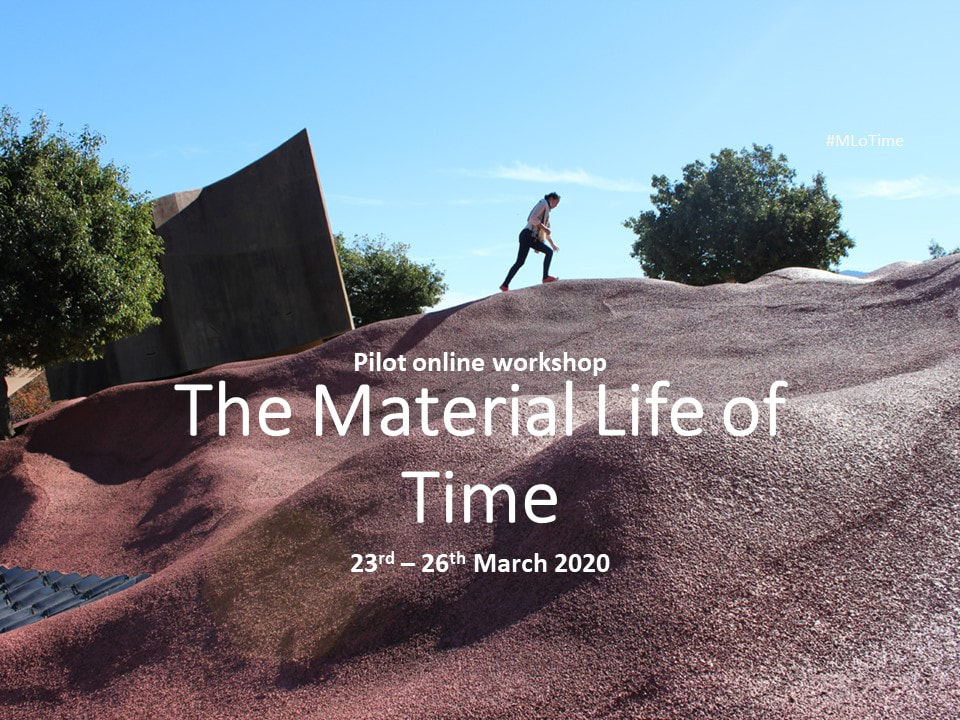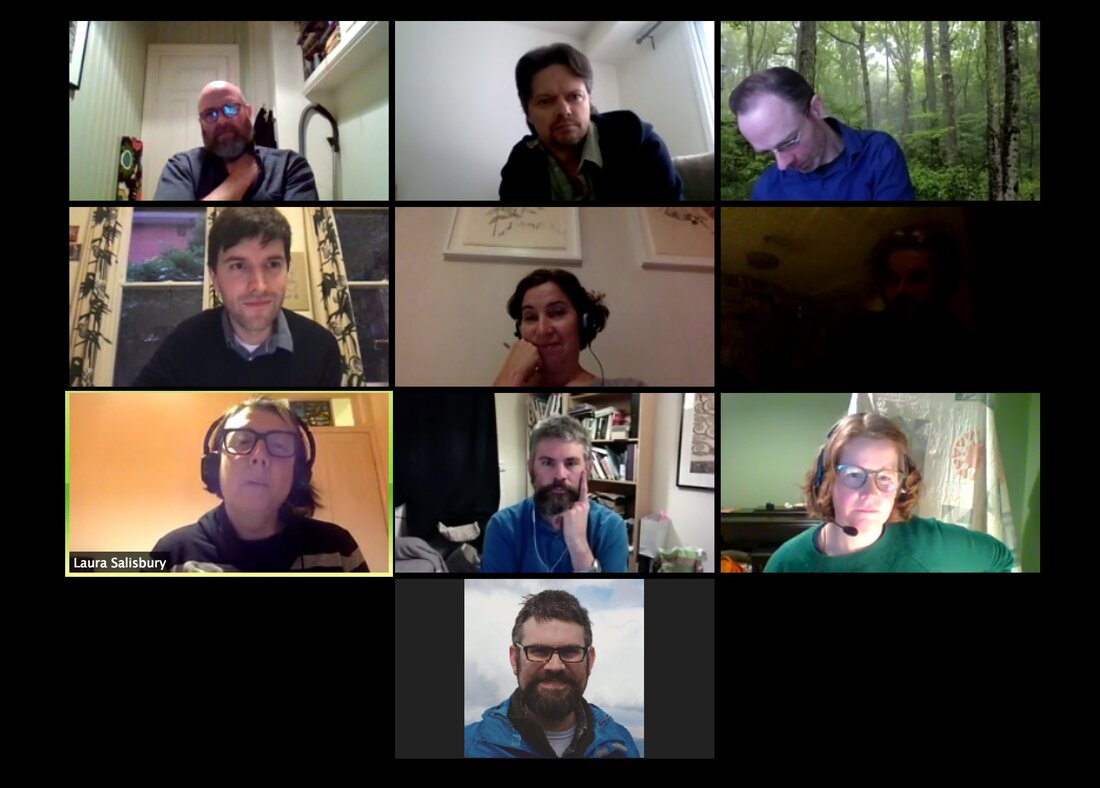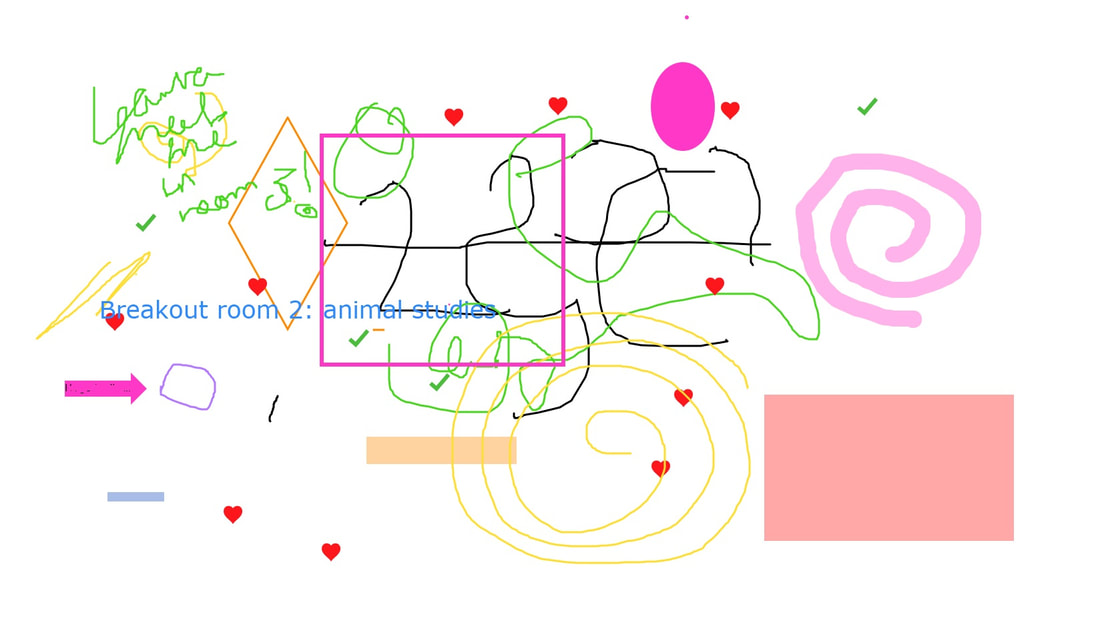|
In July last year, we announced that our next Temporal Belongings conference was going to go virtual in light of the latest reports on climate breakdown. Since then I've been working with our partners including the Lifetimes project at University of Oslo, and the team from the Waiting Times project, to develop our approach. Overwhelmed by the idea of organising a online conference for 100+ when there are so many options and platforms, we opted to run a smaller pilot workshop and see how it might scale up. Of course with the COVID-19 crisis what was a fairly fringe interest has now become mainstream and many conference organisers have already shifted to online approaches or are furiously planning how to do so. Here I want to reflect on some of the techniques that we used, which hopefully might be useful for others. You can see the full agenda for the meeting over on the Temporal Belongings website. Timing Our workshop ran across three days from 19.00-20.30 GMT. This window allowed us to meet synchronously with participants across the Americas, Western Europe and Australasia, as long as we met before daylight saving time started in April. In face-to-face conferencing there is pressure to try and make use of all the time available, encouraging quite long days. In this case, our workshop ended up fitting around our work and care commitments. The repeated meetings over the three days allowed us to cover the same amount of material as a day-long workshop, while also feeling like we were building our relationships with each other over time. Sue Ruddick offers some helpful thoughts on this approach in her paper Slow Conferencing: A Recipe for Gathering in Troubled Times particularly in the section on "time travel while staying in place (stay in your zone)". Even so we had some people starting at 6am and others at 8pm so trying to fit in all these time zones took quite a bit of ethusiasm for attending. Platform Although initially very excited about Unhangout, we opted for Zoom as the most stable platform and one that provided tools that we most wanted to explore. These included breakout rooms, polls, private chat, and shared whiteboards for drawing. Apart from initial glitches, where my connection couldn't handle me sharing my screen and we all kept getting kicked out of the meeting, everything worked pretty flawlessly. Presentations and Q&A We had six presentations in the workshop, two each session. These were of the standard conference style, around 15 minutes long, presented live, slides, and with questions following the two talks. We tried three formats of Q&A, raising hands, sli.do and a virtual fishbowl. Standard Q&A worked fine, but we liked that sli.do allowed us to gather together all the questions that everyone had, to upvote them so that questions most people wanted could be asked, and that questions could be allocated more evenly amongst the speakers. The virtual fishbowl was also successful, although we didn't have enough time to let it run its course. Here the speakers and one volunteer were designated the fish, keeping their video cameras on, while everyone else turned them off. Audience members were invited to join the fish by turning their camera on, at which point someone else in the bowl would step out. It ran largely like a panel discussion, but one where audience members could step in. Interactive sessions In our face-to-face Temporal Belongings events I really like using methods like world cafe and open space so that attendees can have time to synthesise what they've heard with each other and develop shared responses to the issues identified in the meeting's theme. We tried a 'lighting' world cafe session and also the fishbowl method, as well as less structured break out groups. All of these were effective within the time constraints, but we decided that we'd like some more dedicated time to try these out and refine them more. One spontaneous interactive session that we particularly enjoyed was at the end of our last meeting when we were trying out the shared whiteboard... But what about the coffee breaks? While we were really excited to hear from the invited speakers, they were in part an excuse to try out a range of social activities around the paper sessions. The complaint 'but what about the coffee breaks' has weirdly been one of the main excuses I've heard for not moving meetings online, but as many of us are learning at the moment, there are some ways to enable online events to be more social. Because we kept the sessions to strictly 1.5 hours as many of us were dealing with recently introduced lockdowns and the aftermath of UK industrial action, our activities were fairly short. Even so, they were well received and we'll be using many of them again. The first half hour on day one was dedicated to introductions and icebreakers. The original plan was pretty much scuppered because of the connection issues we were having. I've since upgraded to fibre! We still got to do a round of introductions though. We used the 'teleconferencing clock' for this, borrowing from older virtual meeting methods. This assigns everyone to a place on the 'clock' which you can use to do go-rounds or to ask people to 'talk to their neighbour' if you want to have paired discussions for any reason (possibly using private chat). The icebreakers planned where mainly polls on sli.do to start to get a feel for how everyone in the room was feeling, to be followed by breakout groups to talk about expectations and best practice. Unfortunately these were cut in favour of keeping time for the papers. The next two sessions included group check-ins using our 'clock' with everyone answering a question related to the theme of the session such as "Think of a favourite time in your life; what colour would it be?" I particularly like questions like this because they start the event with us thinking about different aspects of our lives, and not just our academic resumes. It seems to help people get to know each other in a more holistic way. While we didn't have time for coffee breaks, we did have short comfort breaks during which I used the 'share sound only' feature on zoom to play cafe sounds for everyone and invited people to contact others via the private chat feature to replace the relaxed chitchat that goes on during these breaks. This was actually really successful and I've since used it for longer breaks in other meetings. Having a set time to say hello to friends and colleagues, or approach speakers with extra questions was really helpful, and if people didn't want to engage they could use one of the icons available on zoom to indicate this. We also noticed that the period prior to the start of the meeting was very important for socialising, with a chance to chat with the few early arrivals before most people showed up. Overall thoughts I really enjoyed this format and looked forward to meeting a group of friendly faces at the end of the day, for fascinating discussions that didn't last too long! In fact I thought this was so successful I wondered about hosting events like these more regularly as a way of meeting new colleagues at little to no cost. As the main organiser, I particularly liked that the times and dates for the workshop were very simple to set. For many of the other events I've organised this has taken up huge amounts of time and been quite agonising, even for smaller groups. Because the sessions were an hour and a half, nearly everyone we approached was able to fit them in around their existing commitments at quite short notice given our daylight savings deadline to take advantage of our time zone window. In terms of scaling up to a larger conference, we thought things like the sli.do Q&A and the breakout rooms could work really well. The coffee break chats and the fishbowl we were less sure of. One thought, borrowed from a past Transition Network conference, is to allocate people to smaller 'home groups' (for want of a better term) and have these meet up at various times through the conference to do check-ins and see how everyone had been experiencing things. We found it frustrating that we couldn't initiate conversations with others on our own and so this will be a key issue for us to investigate next. Other useful points
Panel 2 Time in Colour (Chair: Michelle Bastian) =====================================
Thom van Dooren
1/5/2020 11:01:54 am
Thanks Michelle. A great account of a fantastic event. 7/5/2020 10:44:51 am
Thanks so much Michelle for sharing these valuable reflections. They are SO useful, great variation and fantastic considerations. Comments are closed.
|
Archives
November 2022
Categories
All
|



 RSS Feed
RSS Feed
